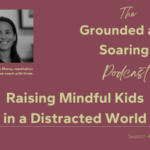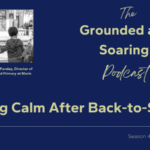Why Hands-On Projects Matter: A Student’s Perspective
In an era where almost everything people do is online…
In an era where almost everything people do is online…
Children are creative creatures — and not just with paints and clay but also with how they approach challenges. We know it’s crucial to nurture their creative spirits, but sometimes that’s easier said than done.
Enter DrawBridge, a nonprofit organization that provides free expressive arts programs to children in domestic violence and homeless shelters, affordable housing facilities, and in communities across seven San Francisco Bay Area counties. In this episode, Tracy Bays-Boothe, Executive Director of DrawBridge, shares about her organization, the power of nurturing the creative spirit, and why she’s so excited that DrawBridge is this year’s Community Partner for The Gather for Good, which takes place on April 15 this year.
We’re all scientists before we’re science students. When their natural curiosity is not cultivated, though, they can lose interest in the scientific principles that allow them to see their world differently.
It’s not their fault, of course.
Storytelling is in our DNA. As human beings, we evolved to tell stories as a way to convey emotion and share information. Storytelling is how we educate and entertain. It’s how we learn about our world and find meaning in it. More than anything, storytelling is how we connect with one another.
Like many aspects of our society, education is in a time of transformation. On my mind specifically are six urgent questions about the future of schools in our society. Though the answers to each aren’t always obvious, understanding the context and specifics of the questions is an important first step for us all…
We know things in relation to other things – we know tall in comparison to short, clean in comparison to messy. So why wouldn’t we compare what our children know to some standard of what they should be learning? After all, we worry they’re falling behind or, on the flip side, take pride in their ability to achieve beyond expectations. Comparison to a standard makes almost unimpugnable sense.
For those who aren’t accustomed to Montessori classrooms, it might seem a bit curious that children cook, clean, sew, and more. There’s actually a lot behind all the cupcakes the students are baking – from complicated math to complex collaboration.
When I saw this New Yorker cover several years ago I could not take my eyes off of it. As we live through our society’s digital-technological revolution, it symbolized, in playful yet somewhat dystopic imagery, the heart of a concern I was feeling—and still do to some degree.
One thing this world really needs is another podcast…We’re doing it anyway though because we’re looking for ways to connect with parents and educators about the stakes and opportunities we all face as we teach and raise children today.
Teenagers are greatly misunderstood in our culture for a whole host of reasons…


